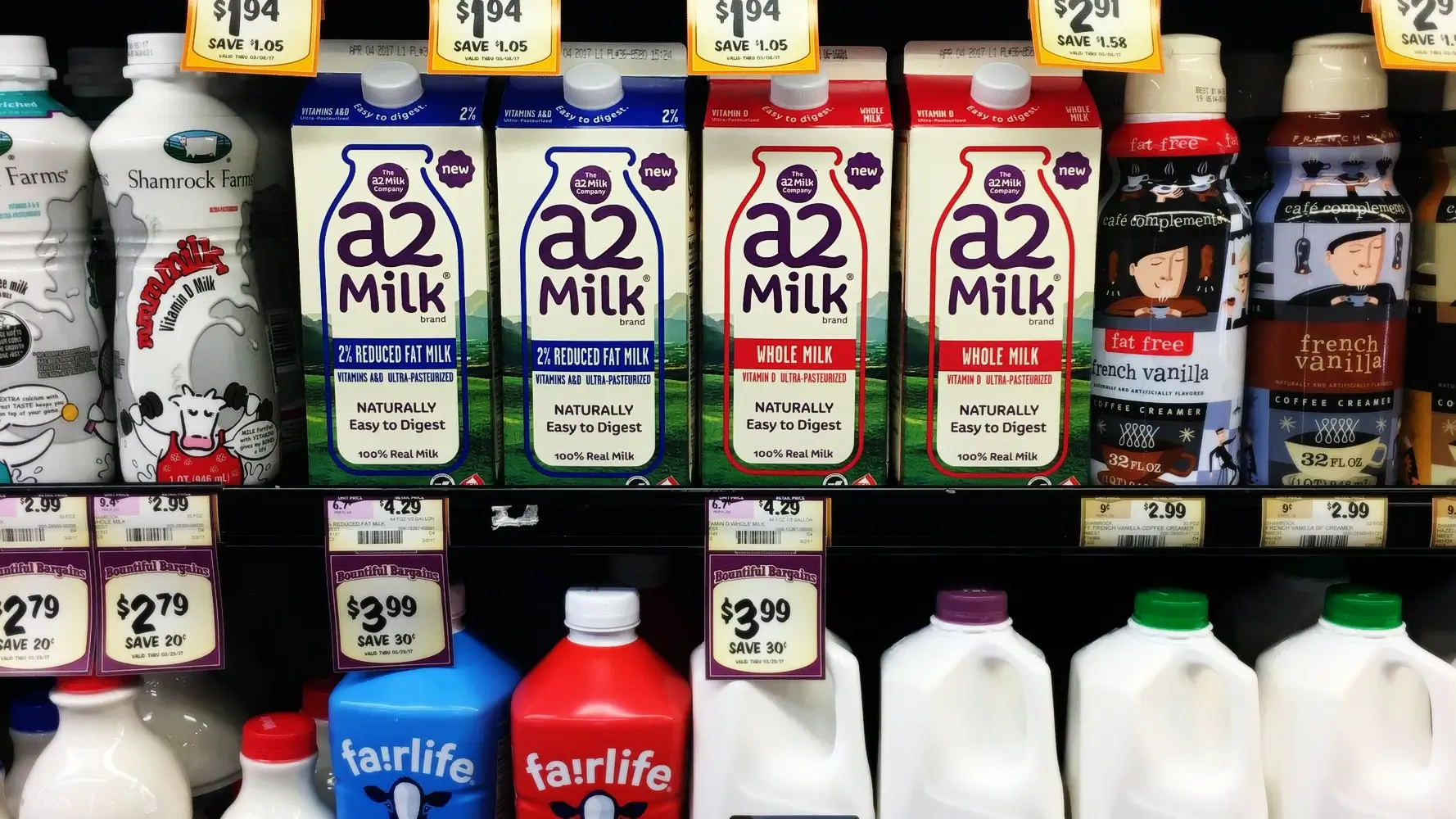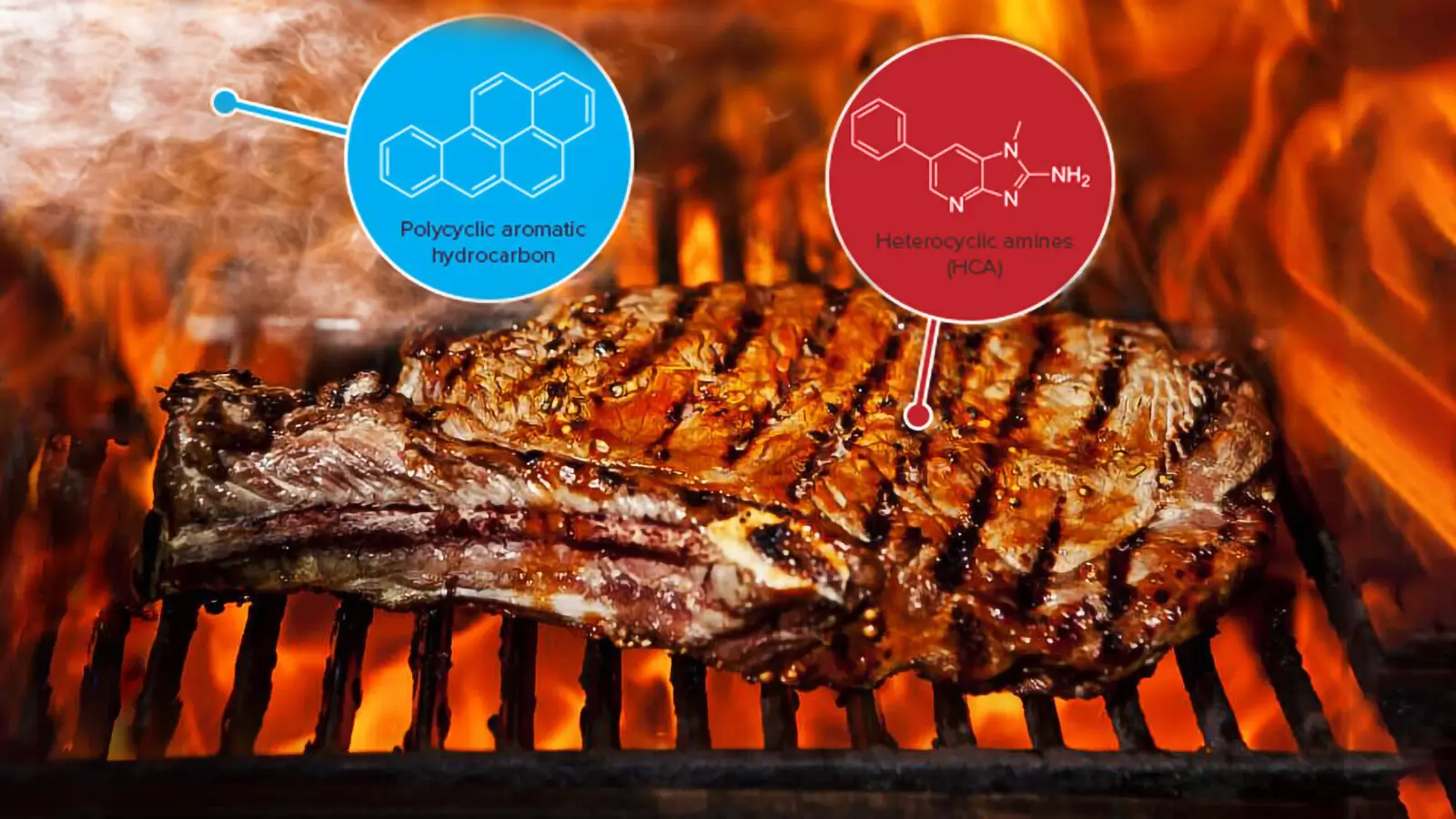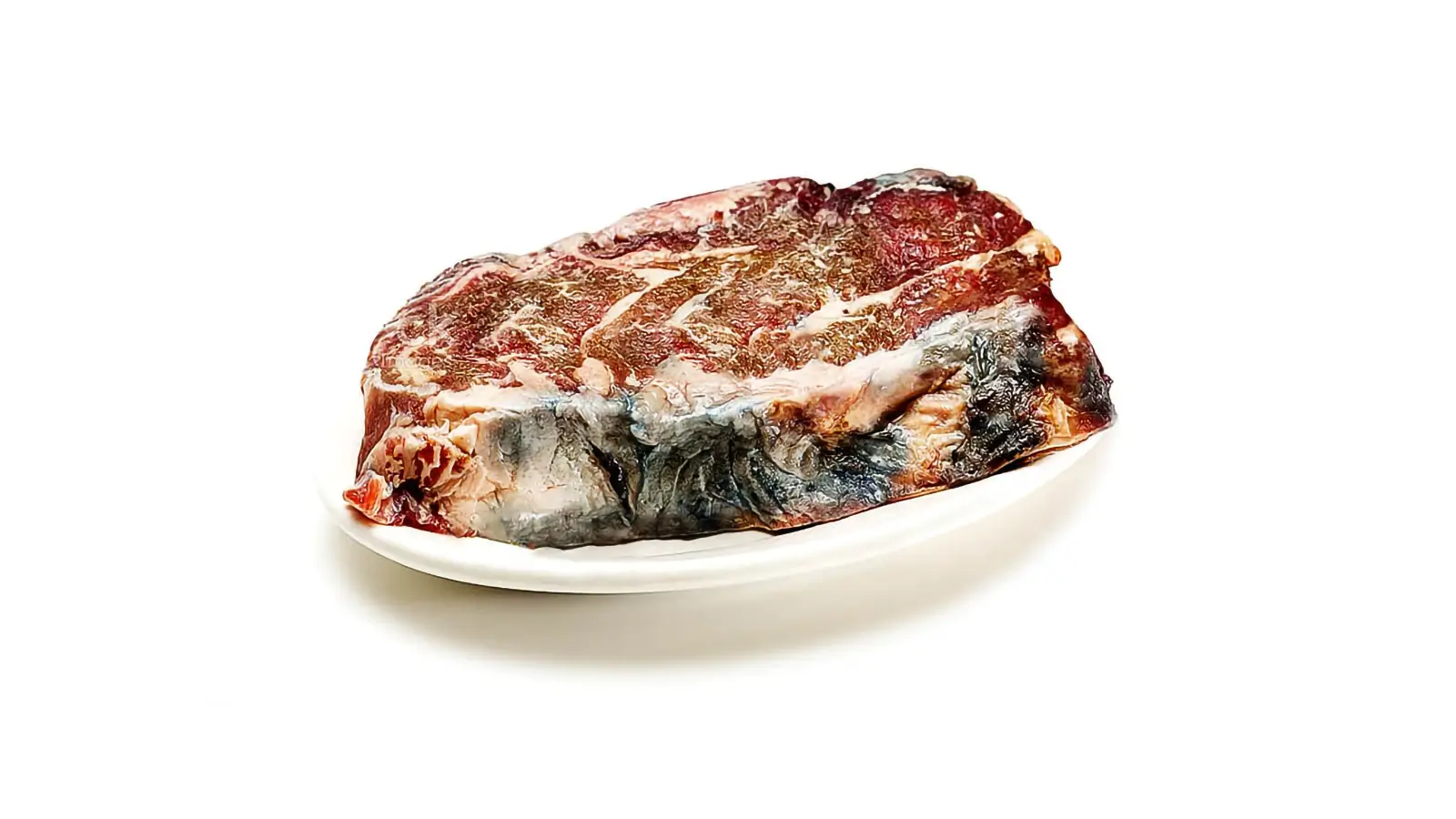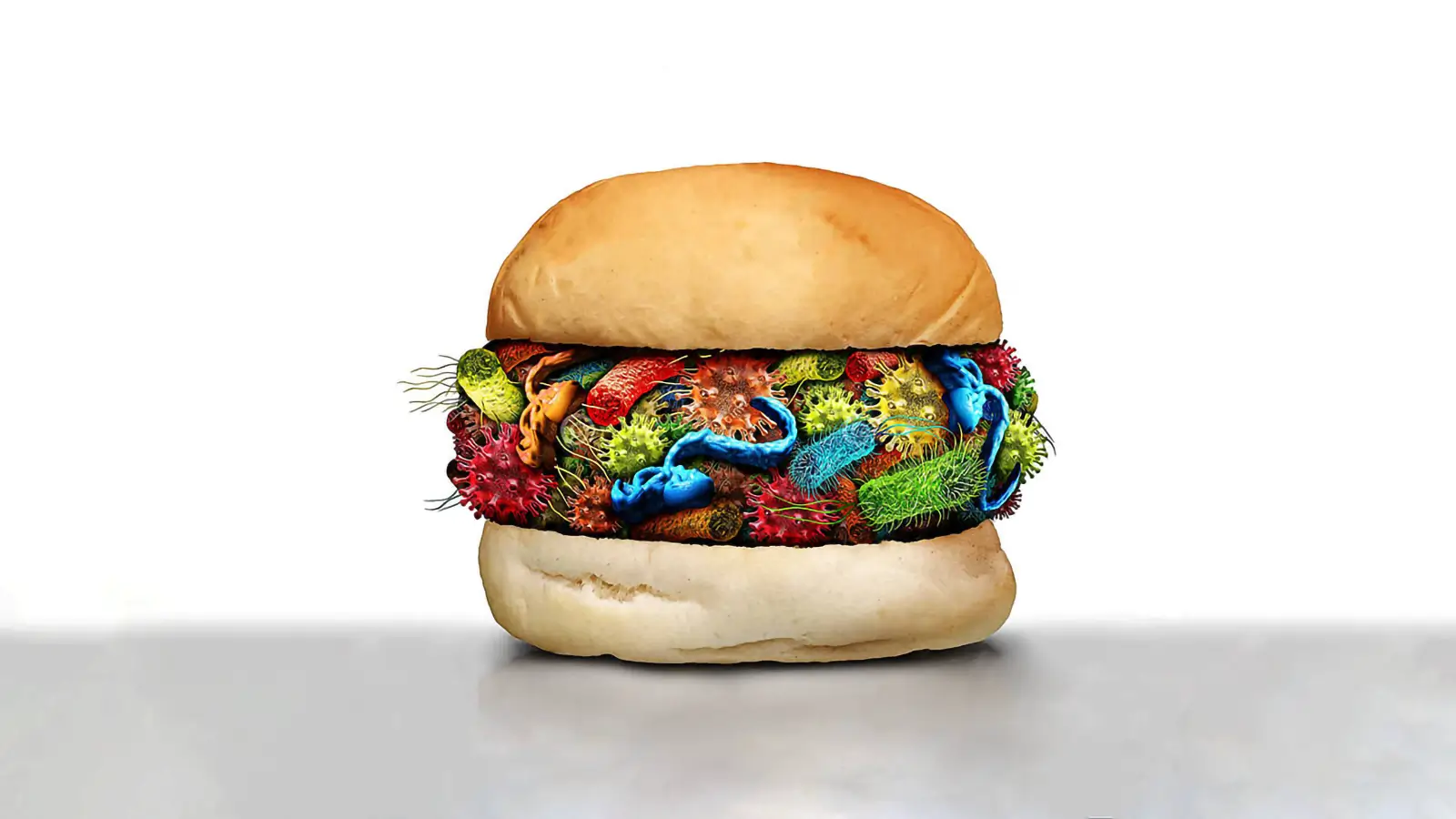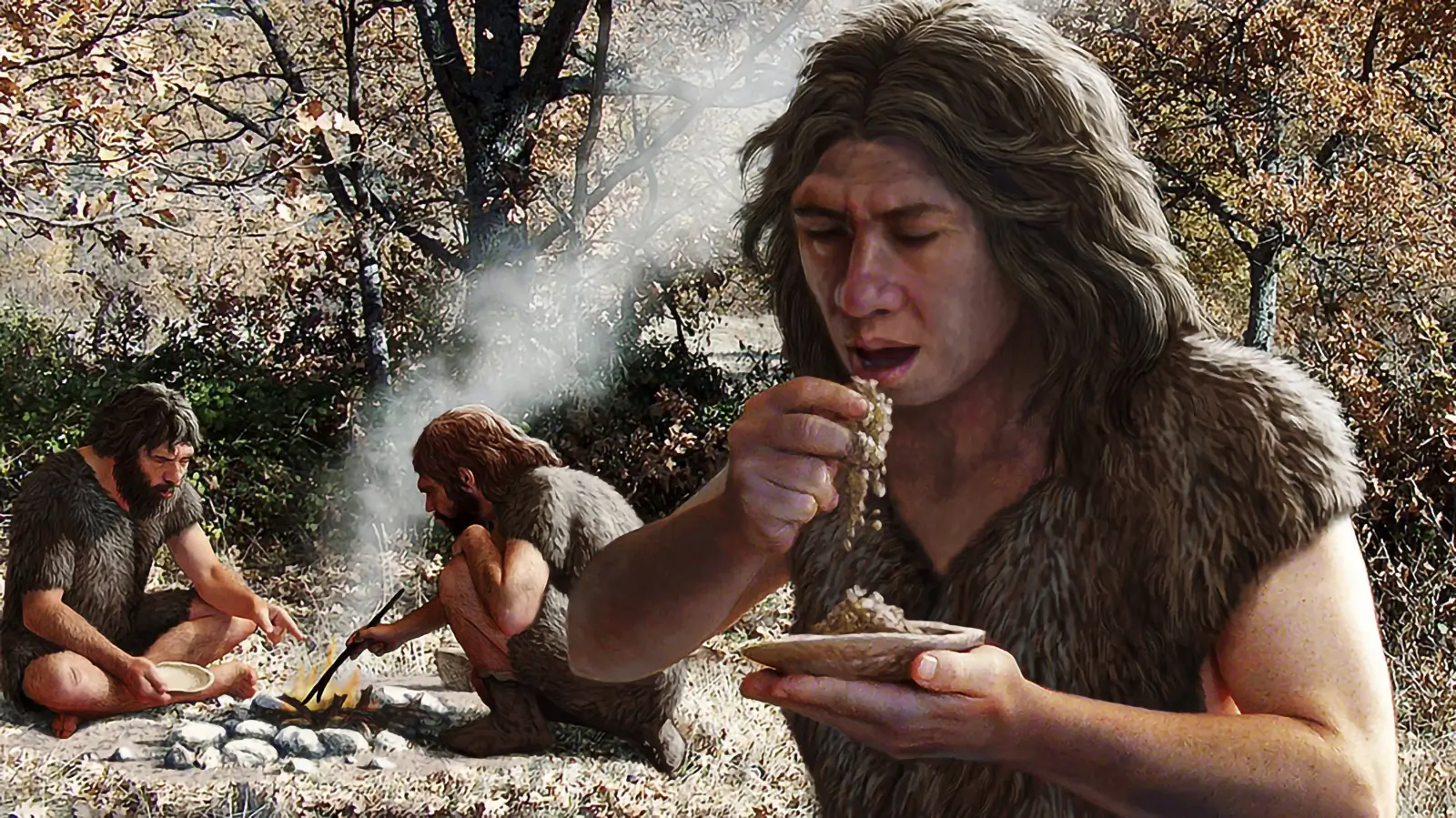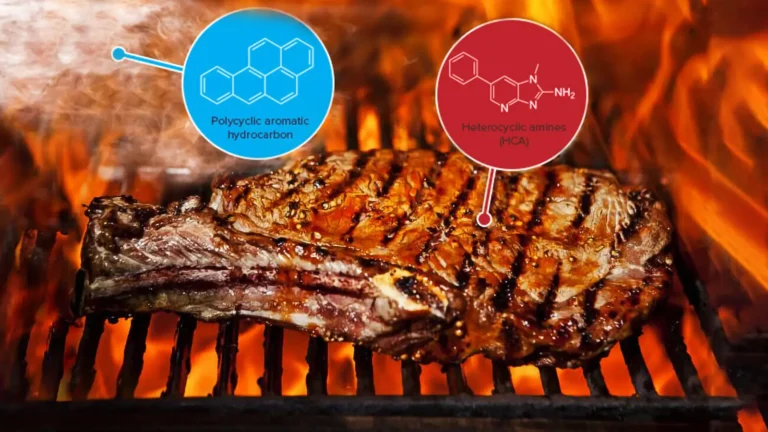High Protein Diet and Metabolic Acidosis: Health Risks Correlations
Low levels of metabolic acidosis is a common occurrence in the standard American diet. Most people are in a state of chronic acidosis and are not aware of it.
Milos Pokimica
Written By: Milos Pokimica
Medically Reviewed by: Dr. Xiùying Wáng, M.D.
Updated June 10, 2023Key Takeaways:
– Western-style diet dominated by animal products promotes the accumulation of non-metabolizable anions.
– Even extremely mild levels of metabolic acidosis prompt serious health diseases like skeletal muscle insulin resistance and kidney failure.
– The acid burden might be a significant variable in the cardiovascular disease risk for the entire population on top of the risk of obesity.
– Calcium loss as a consequence of a high-quality animal protein-rich diet is a scientific consensus.
– Muscle wasting appears to be an adaptive response, to acidosis in calcium deficiency.
– Metabolic acidosis by itself is correlated to type 2 diabetes, hypertension, osteoporosis, connective tissue loss, fibromyalgia, hyperuricemia and gout, kidney function damage, and decline, kidney stones, dehydration, decreased exercise performance…
– Balance your DAL with fruits and vegetables if you don’t want to change your diet. Add nutrient-dense, mineral-rich, antioxidant-rich fruits and vegetables on the top of your SAD diet as a first step.
Standard American Diet.
The standard Western-type diet is a processed food-dominated diet with high levels of animal product consumption. This type of diet is severely lacking in not just green leafy vegetables but also in all types of nutrient-dense and antioxidant-rich whole food sources and contains extreme amounts of high-quality animal protein.
One of the results of this type of diet is the promotion and accumulation of non-metabolizable anions and a condition that significantly worsens in aging because of the physiological decrease in kidney function.
In response to this type of diet-induced metabolic acidosis, the kidneys will implement different metabolic pathways that aim at reestablishing the acid-base equilibrium.
This will have a negative health correlation in the long run.
Metabolic processes.
Some metabolic processes in diet-induced acidity (metabolic acidosis) include the extraction of the non-metabolizable anions, the preservation of citrate, and the increase in kidney ammoniagenesis and urinary excretion of ammonium particles.
These metabolic processes will bring down the urinary pH but will also promote a broad change in urinary synthesis, including hypercalciuria, hypocitraturia, and nitrogen and phosphate removal.
The negative side effect of this is the promotion of calcium stone development.
What is even worse than stones is the fact that even extremely mild levels of metabolic acidosis prompt serious health diseases like skeletal muscle insulin resistance and kidney failure.
Results of observational studies had proven the health risk correlation in insulin resistance and diabetes with all metabolic acidosis markers, including low serum bicarbonate, high serum anion gap, hypocitraturia, and low urine pH. Also, the acid burden might be a significant variable in the cardiovascular disease risk for the entire population on top of the risk of obesity (Adeva and Souto, 2011).
Most people when they hear “acid-forming food” just think about calcium loss not realizing the scope of the problem.
Calcium loss.
Calcium loss as a consequence of a high-quality animal protein-rich diet is a scientific consensus (Thorpe and Evans, 2011). And it is a reasonable hypothesis that by eating acid-forming food (like meat), our body will use calcium to buffer it and as a result, we were, fundamentally, in danger of urinating our bones out. This hypothesis was backed by the fact that when we do eat high protein diet we get an increase in urinary calcium concentrations.
Calcium testing showed in all situations that when we add high protein sources like meat or eggs or dairy the rise in calcium will correspond to the amount of protein added. The hypothesis due to the testing was introduced, and this was at beginning of the 20th century, that animal products, not just meat are acid-forming food. Later testing showed that plant-based whole foods are both acid forming and alkaline but mostly alkaline.
In acid reflux, people will use calcium pills to try to buffer the stomach acid so this is nothing new. Calcium carbonate (chalk) treats heartburn and upset stomach, or other conditions caused by too much stomach acid.

But what about the rest of the body in a standard American animal products-dominated diet?
Sulfur-containing amino acids.
Meat and eggs have a great deal of sulfur-containing amino acids. Amino acids are building blocks of protein and not all of them are made equal. Meat has two to in some cases four times more sulfur-containing amino acids than beans or grains for example and much more than in common vegetables.
That sulfur creates sulfuric acid by oxidation of protein, which needs to be neutralized by the kidneys (Brosnan & Brosnan, 2006).
There was even a debate about dairy for a long time because of this. Milk was considered to be a good source of calcium but also a source of protein that needs to be buffered by calcium. In the end, dairy might not be a good source of calcium when we calculate calcium loss due to metabolic acidosis.
One step further will be a question of how much calcium we need to consume on a standard protein-dominated Western diet if we have to calculate calcium loss.
If we don’t take enough calcium and calcium deficiency is a common deficiency then where will our body pull the calcium from? The logical answer will be from the bones.
This is especially problematic for people with already-developed osteoporosis. For every 40 grams of protein we add to our diet, and in the SAD (standard American diet) average is 90 grams a day, the loss of calcium in our urine will be around 50mg. If you are already calcium deficient or in a risk group for osteoporosis, this would translate into a two percent loss in a year. We just have around two pounds of calcium in total stored whiting our body including bones. Our bodies need 30 grams of protein at max rest of the protein goes for gluconeogenesis, around 60 grams in SAD. At average. That is 75mg a day of calcium loss multiplied by 365 is 27375mg of calcium loss. This is 27 grams and we have a total of around 2000 grams for about 1,5 to 2 percent of total loss annually.
If you are calcium deficient and on a high protein diet especially a high-quality protein diet this can be one of the problems. If you are not calcium deficient then the body will just pull more of the calcium from the diet as a defense mechanism (Calvez et al., 2011).
There was a study that proved that if there is calcium in the food our body will pull additional amounts to buffer the acids. They gave subjects radioactive calcium and also increased protein in their diet (Cao et al., 2011). Then scientists measure an increase in urinary calcium loss with a special emphasis on radioactivity.
The calcium loss did increase but all of the urinary calcium or most of it around 90 percent was radioactive.
An increase in dietary protein created an increase in calcium retention from 20% to 26%. There is still no consensus among scientists on how dietary protein helps calcium assimilation but if there is calcium in the meal it will be more bioavailable due to protein.
Calcium deficiency.
The problem arises in situations with already preexisting calcium deficiency.
One other problem is aging.
If there is already preexisting calcium deficiency where will our body pull additional calcium to buffer the acids and also what happens in aging? As we age our blood gets more acidic due to renal decline (Frassetto et al., 1996). The worst scenario is in patients with renal disease. They have strictly regulated protein intake monitored by certified dietitians.
In these situations, excess acids will be buffered from calcium that has to be pulled from our body, and the first on the line is not bone calcium.
It is pulled from the muscles.
Catabolism of the muscle tissue.
Catabolism of the muscle tissue will be a primary source for acid neutralization. Muscle wasting appears to be an adaptive response, to acidosis (Mann et al., 2021). When our body catabolizes muscle protein it would have a source of the amino acid l-glutamine that will come out of a catabolized protein (Gurina, 2022). Then it will use glutamine to neutralize acids.
Glutamine is a common anti-catabolic muscle-building supplement that bodybuilders like to use.

It might be a good idea if you don’t have an adequate intake of calcium to at least add glutamine as a supplement if for any reason you don’t want to decrease protein consumption. Also, glutamine is predominantly a renal gluconeogenic substrate, whereas alanine gluconeogenesis is essentially confined to the liver (Stumvoll et al., 1999). And no you cannot eat calcium carbonate chalk or any other mineral as a supplement. Minerals are only able to be fully bioavailable for biochemical processes if they are small enough in physical size or if they are in the monoatomic form that plants create.
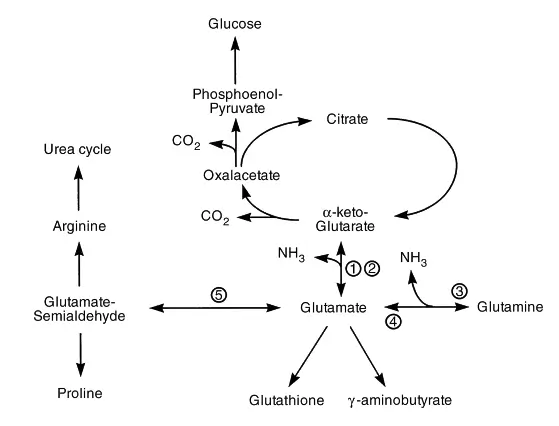
In sarcopenia due to protein wasting in aging the common practice is to increase protein requirements for the elderly and also to add a calcium supplement. This is done because calcium is needed to buffer the metabolic acidosis that will be a consequence of an increase in dietary protein. If not corrected this low level of chronic metabolic acidosis will contribute to both osteoporosis and muscle wasting in old age.
For people eating SAD the amount of calcium needed to buffer acidity is a minimum of 800mg a day.
In correlation, African women in rural parts of the continent don’t get osteoporosis on average of 300mg of calcium a day. In aging, you don’t have to drink milk to get calcium or eat meat to get protein. Beans for example have as much protein as meat but are not acid-forming. Poppy seeds have 1,4 times more calcium in 100 grams than 1 liter of milk and sesame seeds have the same amount of calcium in 100 grams as 1 liter of milk. Grains and some seeds like sunflower seeds are mildly acidic, not at the same level as meat but also sunflower seeds are one of the rarely available sources of vitamin E and it is a must in most diet plans.
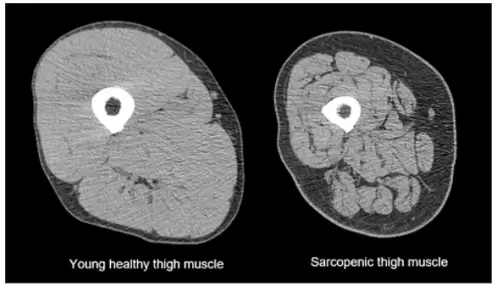
The one solution will be to stop eating a high-quality protein diet because there are other health risk factors correlated with it than just metabolic acidosis that can be easily corrected if it exists in the first place.
Dietary acid load (DAL).
In evolutionary terms, all hominin diets were plant-based. This means that our body unlike the bodies of carnivores species had not evolved to cope well with a chronic acid-forming diet. Hominin diets based on whole food plant-based sources were more base than acid-forming.
There are two categories basically.
Animal protein-rich foods that promote acid formation and metabolic acidosis and fruits and vegetables are base-inducing foods.
More about alkaline diets will be discussed in correlated articles. Dietary acid load (DAL) is calculated as the sum of all of the food we have eaten during the day. DAL is calculated based on the intake of acid-forming and base-forming foods, such as animal proteins and fruits and vegetables, respectively. Two common methods for estimating DAL are potential renal acid load (PRAL) and net endogenous acid production (NEAP). PRAL is based on the intake of protein, phosphorus, potassium, magnesium, and calcium, while NEAP is based on the intake of protein and potassium. DAL needs to be in normal ranges because it is correlated to more serious diseases like kidney damage, (Osuna-Padilla et al., 2019).
“Diets high in PRAL induce a low-grade metabolic acidosis state, which is associated with the development of metabolic alterations such as insulin resistance, diabetes, hypertension, chronic kidney disease, bone disorders, low muscle mass and other complications.“
(Osuna-Padilla et al., 2019)
Other correlations include independently of any other factor of insulin resistance and cardiovascular disease (Krupp et al., 2018),
“Diets rich in fruits and vegetables, like the Dietary Approaches to Stop Hypertension (DASH)-diet, are usually characterized by high potassium intake and reduced dietary acid load, and have been shown to reduce blood pressure (BP).”
“PRAL was significantly associated with higher systolic BP (p = 0.0002) and higher hypertension prevalence (Odds ratio [OR] high vs. low PRAL = 1.45, p = 0.0004) in models adjusted for age, sex, body mass index (BMI), estimated sodium intake, kidney function, relevant medication, and further important covariates. “
“Our results show, for the first time in a comparative analysis of a large representative population sample, significant relationships of BP and hypertension prevalence with questionnaire- and biomarker-based estimates of potassium intake and with an estimate of dietary acid load.“
(Krupp et al., 2018)
It is not just a question of calcium loss. You can read more about health risk correlations with a high protein diet in a correlated article about this (High protein diet- Health risk correlations).
| Food source | PRAL value |
|---|---|
| Meat | 9.5 |
| Cheese | 26.8 |
| Eggs | 8.2 |
| Fruits | -3.1 |
| Vegetables | -2.8 |
Metabolic acidosis health risk correlations:
When we consider just chronic low-level acidity caused by a Western-type diet without any other correlation, just metabolic acidosis by itself is correlated to (DiNicolantonio and O’Keefe, 2021):
- Insulin resistance and type 2 diabetes.
- Increased gluconeogenesis (conversion of amino acids to glucose).
- Hypertension.
- Bone loss in calcium deficient individuals.
- Osteoporosis/osteopenia/sarcopenia in calcium deficient individuals.
- Muscle loss and reduced muscle strength in calcium deficient individuals.
- Connective tissue loss in calcium deficient individuals.
- Fibromyalgia.
- Hyperuricemia (too much uric acid in your blood) and gout.
- Kidney function damage and decline.
- Kidney stones independent from renal decline.
- Less citrate to bind to calcium and more calcium to oxalic acid increasing calcium oxalate stone formation.
- Reduced urine pH increasing uric acid stone formation.
- Negative sodium and chloride balance.
- Salt loss and mineral deficiencies.
- Increased loss of sodium, chloride, potassium, calcium, magnesium, sulfate, and phosphate out of the urine.
- The sodium and potassium loss are due to a decrease in the reabsorption of these minerals by the kidneys, which likely reduces the reabsorption of taurine
- The loss of calcium, magnesium, and phosphate is from bone losses
- Taurine loss
- Increased water loss out of the urine.
- Dehydration.
- Decreased exercise performance.
Low-grade acidosis.
Why low-grade acidosis is so common in the standard American diet:
- The average diet in the Western world leads to a net acid excretion of 50–100 mEq/day.
- The kidneys must be relied on to prevent low-grade acidosis as the lungs cannot affect acid-base status over the long run.
- The kidneys of a healthy person can only excrete 40–70 mEq of acid per day before the acid is retained in the body.
- Animal-based, keto, or carnivore-type diets typically provide 150–250 mEq of acid per day.
- Once the kidneys reach their threshold approximately 1 mEq of acid is retained per 2.5 mEq of acid above the threshold.
- If the diet does not contain enough bicarbonate (bicarbonate-forming substances or citrate) and minerals (sodium, potassium, magnesium, and calcium) to neutralize the excess acid then negative consequences to numerous bodily systems take place.
Solution:
The solution for this is simple as it can be. Balance your DAL with fruits and vegetables if you don’t want to change your diet. Add nutrient-dense, mineral-rich, antioxidant-rich fruits and vegetables on the top of your SAD diet as a first step. Add sesame seeds to your muesli and eat kale in salads and it would help your body to neutralize some of the metabolic acidosis. This will be a step to prevent acidity from the diet and nothing else. Add glutamine supplement.
| Food | Calcium per serving |
|---|---|
| Poppy seeds (30g) | 432 mg |
| Sesame seeds (30g) | 201 mg |
| Chia seeds (30g) | 189 mg |
| Calcium-fortified soy milk (200ml) | 240 mg |
| Calcium-fortified oat milk (200ml) | 240 mg |
| Calcium-fortified almond milk (200ml) | 240 mg |
| Calcium-fortified coconut milk (200ml) | 240 mg |
| Calcium-set tofu (100g) | 350 mg |
| Kale (80g cooked) | 185 mg |
| Figs (30g dried) | 75 mg |
| Almonds (30g whole kernels) | 81 mg |
However, other health consequences of high-quality protein-dominated diets cannot be so easily avoided.
Conclusion:
- A Western-style diet dominated by animal products promotes the accumulation of non-metabolizable anions.
- This accumulation significantly worsens in aging because of the physiological decrease in kidney function.
- In response to this type of diet-induced metabolic acidosis, the kidneys will implement different metabolic pathways that aim at reestablishing the acid-base equilibrium.
- Metabolic processes in diet-induced acidity (metabolic acidosis) include the extraction of the non-metabolizable anions, the preservation of citrate, and the increase in kidney ammoniagenesis and urinary excretion of ammonium particles.
- These metabolic processes will bring down the urinary pH but will also promote a broad change in urinary synthesis, including hypercalciuria, hypocitraturia, and nitrogen and phosphate removal.
- The negative side effect of this is the promotion of calcium stone development.
- Even extremely mild levels of metabolic acidosis prompt serious health diseases like skeletal muscle insulin resistance and kidney failure.
- The acid burden might be a significant variable in the cardiovascular disease risk for the entire population on top of the risk of obesity .
- Calcium loss as a consequence of a high-quality animal protein-rich diet is a scientific consensus.
- Meat and eggs have a great deal of sulfur-containing amino acids.
- That sulfur creates sulfuric acid by oxidation of protein, which needs to be neutralized by the kidneys.
- If you consume a calcium-deficient diet and a high protein diet especially a high-quality protein diet additional calcium will be lost.
- As we age our blood gets more acidic due to renal decline.
- The worst scenario is in patients with renal disease.
- Muscle wasting appears to be an adaptive response, to acidosis in calcium deficiency.
- In sarcopenia due to protein wasting in aging the common practice is to increase protein requirements for the elderly and also to add a calcium supplement.
- For people eating SAD the amount of calcium needed to buffer acidity is a minimum of 800mg a day.
- Hominin diets based on whole food plant-based sources were more base than acid-forming.
- Dietary acid load (DAL) is calculated as the sum of all of the food we have eaten during the day.
- DAL needs to be in normal ranges because it is correlated to more serious diseases like kidney damage.
- Animal protein-rich foods that promote acid formation and metabolic acidosis and fruits and vegetables are base-inducing foods.
- Balance your DAL with fruits and vegetables if you don’t want to change your diet.
FAQ
References:
- Adeva, M. M., & Souto, G. (2011). Diet-induced metabolic acidosis. Clinical nutrition (Edinburgh, Scotland), 30(4), 416–421. https://doi.org/10.1016/j.clnu.2011.03.008
- DiNicolantonio, J. J., & O’Keefe, J. H. (2021). Low-grade metabolic acidosis as a driver of chronic disease: a 21st century public health crisis. Open Heart, 8(2), e001730. https://doi.org/10.1136/openhrt-2021-001730
- Thorpe, M. P., & Evans, E. M. (2011). Dietary protein and bone health: harmonizing conflicting theories. Nutrition reviews, 69(4), 215–230. https://doi.org/10.1111/j.1753-4887.2011.00379.x
- Calvez, J., Poupin, N., Chesneau, C., Lassale, C., & Tomé, D. (2012). Protein intake, calcium balance and health consequences. European journal of clinical nutrition, 66(3), 281–295. https://doi.org/10.1038/ejcn.2011.196
- Kerstetter, J. E., O’Brien, K. O., Caseria, D. M., Wall, D. E., & Insogna, K. L. (2005). The impact of dietary protein on calcium absorption and kinetic measures of bone turnover in women. The Journal of clinical endocrinology and metabolism, 90(1), 26–31. https://doi.org/10.1210/jc.2004-0179
- Cao, J. J., Johnson, L. K., & Hunt, J. R. (2011). A diet high in meat protein and potential renal acid load increases fractional calcium absorption and urinary calcium excretion without affecting markers of bone resorption or formation in postmenopausal women. The Journal of nutrition, 141(3), 391–397. https://doi.org/10.3945/jn.110.129361
- Ausman, L. M., Oliver, L. M., Goldin, B. R., Woods, M. N., Gorbach, S. L., & Dwyer, J. T. (2008). Estimated net acid excretion inversely correlates with urine pH in vegans, lacto-ovo vegetarians, and omnivores. Journal of renal nutrition : the official journal of the Council on Renal Nutrition of the National Kidney Foundation, 18(5), 456–465. https://doi.org/10.1053/j.jrn.2008.04.007
- Schwalfenberg G. K. (2012). The alkaline diet: is there evidence that an alkaline pH diet benefits health?. Journal of environmental and public health, 2012, 727630. https://doi.org/10.1155/2012/727630
- Dawson-Hughes, B., Harris, S. S., & Ceglia, L. (2008). Alkaline diets favor lean tissue mass in older adults. The American journal of clinical nutrition, 87(3), 662–665. https://doi.org/10.1093/ajcn/87.3.662
- Chauveau, P., Combe, C., Fouque, D., & Aparicio, M. (2013). Vegetarianism: advantages and drawbacks in patients with chronic kidney diseases. Journal of renal nutrition : the official journal of the Council on Renal Nutrition of the National Kidney Foundation, 23(6), 399–405. https://doi.org/10.1053/j.jrn.2013.08.004
- Uribarri, J., & Oh, M. S. (2012). The key to halting progression of CKD might be in the produce market, not in the pharmacy. Kidney international, 81(1), 7–9. https://doi.org/10.1038/ki.2011.331
- Sherman, H. C., & Gettler, A. O. (1912). THE BALANCE OF ACID-FORMING AND BASE-FORMING ELEMENTS IN FOODS, AND ITS RELATION TO AMMONIA METABOLISM. Journal of Biological Chemistry, 11(4), 323–338. https://doi.org/10.1016/s0021-9258(18)88738-5
- Calcium requirement of maintenance in man. J. Biol. Chem. 1920, 44:21-27 [PDF]
- Kerstetter, J. E., O’Brien, K. O., & Insogna, K. L. (2003). Low protein intake: the impact on calcium and bone homeostasis in humans. The Journal of nutrition, 133(3), 855S–861S. https://doi.org/10.1093/jn/133.3.855S
- Frassetto, L. A., Morris, R. C., Jr, & Sebastian, A. (1996). Effect of age on blood acid-base composition in adult humans: role of age-related renal functional decline. The American journal of physiology, 271(6 Pt 2), F1114–F1122. https://doi.org/10.1152/ajprenal.1996.271.6.F1114
- Goraya, N., Simoni, J., Jo, C. H., & Wesson, D. E. (2013). A comparison of treating metabolic acidosis in CKD stage 4 hypertensive kidney disease with fruits and vegetables or sodium bicarbonate. Clinical journal of the American Society of Nephrology : CJASN, 8(3), 371–381. https://doi.org/10.2215/CJN.02430312
- Sebastian, A., Frassetto, L. A., Sellmeyer, D. E., Merriam, R. L., & Morris, R. C., Jr (2002). Estimation of the net acid load of the diet of ancestral preagricultural Homo sapiens and their hominid ancestors. The American journal of clinical nutrition, 76(6), 1308–1316. https://doi.org/10.1093/ajcn/76.6.1308
- Deriemaeker, P., Aerenhouts, D., Hebbelinck, M., & Clarys, P. (2010). Nutrient based estimation of acid-base balance in vegetarians and non-vegetarians. Plant foods for human nutrition (Dordrecht, Netherlands), 65(1), 77–82. https://doi.org/10.1007/s11130-009-0149-5
- Taylor, L., & Curthoys, N. P. (2004). Glutamine metabolism: Role in acid-base balance*. Biochemistry and molecular biology education : a bimonthly publication of the International Union of Biochemistry and Molecular Biology, 32(5), 291–304. https://doi.org/10.1002/bmb.2004.494032050388
- Brosnan, J. T., & Brosnan, M. E. (2006). The Sulfur-Containing Amino Acids: An Overview ,. Journal of Nutrition, 136(6), 1636S-1640S. https://doi.org/10.1093/jn/136.6.1636s
- Calvez, J., Poupin, N., Chesneau, C., Lassale, C., & Tomé, D. (2012). Protein intake, calcium balance and health consequences. European journal of clinical nutrition, 66(3), 281–295. https://doi.org/10.1038/ejcn.2011.196
- Gurina, T. S. (2022, December 11). Biochemistry, Protein Catabolism. StatPearls – NCBI Bookshelf. https://www.ncbi.nlm.nih.gov/books/NBK556047/
- Mann, G., Mora, S., Madu, G., & Adegoke, O. A. J. (2021). Branched-chain Amino Acids: Catabolism in Skeletal Muscle and Implications for Muscle and Whole-body Metabolism. Frontiers in physiology, 12, 702826. https://doi.org/10.3389/fphys.2021.702826
- Stumvoll, M., Perriello, G., Meyer, C., & Gerich, J. E. (1999). Role of glutamine in human carbohydrate metabolism in kidney and other tissues. Kidney International, 55(3), 778–792. https://doi.org/10.1046/j.1523-1755.1999.055003778.x
- Osuna-Padilla, I. A., Leal-Escobar, G., Garza-García, C. A., & Rodríguez-Castellanos, F. E. (2019). Dietary Acid Load: mechanisms and evidence of its health repercussions. Carga ácida de la dieta; mecanismos y evidencia de sus repercusiones en la salud. Nefrologia, 39(4), 343–354. https://doi.org/10.1016/j.nefro.2018.10.005
- Krupp, D., Esche, J., Mensink, G. B. M., Klenow, S., Thamm, M., & Remer, T. (2018). Dietary Acid Load and Potassium Intake Associate with Blood Pressure and Hypertension Prevalence in a Representative Sample of the German Adult Population. Nutrients, 10(1), 103. https://doi.org/10.3390/nu10010103
Related Posts
Do you have any questions about nutrition and health?
I would love to hear from you and answer them in my next post. I appreciate your input and opinion and I look forward to hearing from you soon. I also invite you to follow us on Facebook, Instagram, and Pinterest for more diet, nutrition, and health content. You can leave a comment there and connect with other health enthusiasts, share your tips and experiences, and get support and encouragement from our team and community.
I hope that this post was informative and enjoyable for you and that you are prepared to apply the insights you learned. If you found this post helpful, please share it with your friends and family who might also benefit from it. You never know who might need some guidance and support on their health journey.
– You Might Also Like –

Learn About Nutrition
Milos Pokimica is a doctor of natural medicine, clinical nutritionist, medical health and nutrition writer, and nutritional science advisor. Author of the book series Go Vegan? Review of Science, he also operates the natural health website GoVeganWay.com
Medical Disclaimer
GoVeganWay.com brings you reviews of the latest nutrition and health-related research. The information provided represents the personal opinion of the author and is not intended nor implied to be a substitute for professional medical advice, diagnosis, or treatment. The information provided is for informational purposes only and is not intended to serve as a substitute for the consultation, diagnosis, and/or medical treatment of a qualified physician or healthcare provider.NEVER DISREGARD PROFESSIONAL MEDICAL ADVICE OR DELAY SEEKING MEDICAL TREATMENT BECAUSE OF SOMETHING YOU HAVE READ ON OR ACCESSED THROUGH GoVeganWay.com
NEVER APPLY ANY LIFESTYLE CHANGES OR ANY CHANGES AT ALL AS A CONSEQUENCE OF SOMETHING YOU HAVE READ IN GoVeganWay.com BEFORE CONSULTING LICENCED MEDICAL PRACTITIONER.
In the event of a medical emergency, call a doctor or 911 immediately. GoVeganWay.com does not recommend or endorse any specific groups, organizations, tests, physicians, products, procedures, opinions, or other information that may be mentioned inside.
Editor Picks –
Milos Pokimica is a health and nutrition writer and nutritional science advisor. Author of the book series Go Vegan? Review of Science, he also operates the natural health website GoVeganWay.com
Latest Articles –
Top Health News — ScienceDaily
- Why consciousness exists at allon December 15, 2025
Consciousness evolved in stages, starting with basic survival responses like pain and alarm, then expanding into focused awareness and self-reflection. These layers help organisms avoid danger, learn from the environment, and coordinate socially. Surprisingly, birds show many of these same traits, from subjective perception to basic self-awareness. This suggests consciousness is far older and more widespread than once believed.
- AI found a way to stop a virus before it enters cellson December 15, 2025
Researchers discovered a hidden molecular “switch” that herpes viruses rely on to invade cells. By combining AI, simulations, and lab experiments, they identified and altered a single amino acid that shut down viral entry. What once might have taken years was achieved far faster using computational tools. The findings open new possibilities for designing future antiviral treatments.
- New study shows some plant-based diets may raise heart disease riskon December 15, 2025
Researchers tracking over 63,000 adults found that high-quality, minimally processed plant foods significantly reduce cardiovascular risk. But when those plant foods are ultra-processed, the advantage disappears—and can even backfire. Some ultra-processed plant diets increased risk by 40%. The study urges a shift toward whole, naturally nutrient-rich plant foods.
- These simple habits could make your brain 8 years younger, study findson December 15, 2025
New research shows that your brain’s “true age” can shift dramatically depending on how you live, with optimism, restorative sleep, stress management, and strong social support acting like powerful anti-aging tools. Using advanced MRI-based brain-age estimates, scientists found that people with multiple healthy lifestyle factors had brains up to eight years younger than expected — even among those living with chronic pain.
- Anxiety and insomnia linked to sharp drops in key immune cellson December 15, 2025
Natural killer cells act as the immune system’s rapid-response team, but the stress of anxiety and insomnia may be quietly thinning their ranks. A study of young women in Saudi Arabia found that both conditions were linked to significantly fewer NK cells—especially the circulating types responsible for destroying infected or abnormal cells. As anxiety severity increased, NK cell levels dropped even further, suggesting a stress-driven weakening of immune defenses.
- Cannabis compounds show unexpected power against ovarian canceron December 15, 2025
Scientists have discovered that key compounds from cannabis—CBD and THC—show surprisingly strong effects against ovarian cancer cells. Used together, they slow cell growth, reduce colony formation, and may even block the cancer’s ability to spread. Even more promising, the treatment caused minimal harm to healthy cells and appears to work by restoring a disrupted signaling pathway that fuels tumor growth.
- Mayo Clinic neurosurgeon reveals 8 back pain myths to stop believingon December 15, 2025
Back pain is wrapped in persistent myths, but many are far from the truth. From misconceptions about heavy lifting and bed rest to confusion over posture, exercise, and surgery, Dr. Meghan Murphy breaks down what really causes pain and what actually helps. Her insights reveal that everyday habits, movement, and smart prevention often make a bigger difference than people realize.
PubMed, #vegan-diet –
- Healthful and Unhealthful Plant-Based Diets and Their Association with Cardiometabolic Targets in Women Diagnosed with Breast Cancer: A Cross-Sectional Analysis of a Lifestyle Trialon December 11, 2025
CONCLUSIONS: Maintaining cardiometabolic risk factors within normal ranges is clinically relevant in BCS, and this may be more likely when a plant-based diet is consumed, especially if low in unhealthy plant foods.
- Dietary and Lifestyle Patterns and Their Associations with Cardiovascular and Inflammatory Biomarkers in Vegans, Vegetarians, Pescatarians, and Omnivores: A Cross-Sectional Studyon December 11, 2025
Background: Plant-based diets are associated with reduced cardiometabolic risk, yet the influence of lifestyle behaviors on these benefits remains insufficiently understood. Objective: To assess the combined impact of dietary patterns and lifestyle behaviors on body composition, lipid profiles, and inflammatory biomarkers in healthy young adults. Methods: In this cross-sectional study, 155 participants aged 18-39 years were categorized into four dietary groups: vegans (n = 48), vegetarians (n […]
- Functional and Nutritional Properties of Lion’s Mane Mushrooms in Oat-Based Desserts for Dysphagia and Healthy Ageingon December 11, 2025
Hericium erinaceus (Lion’s Mane mushroom) is a medicinal species recognised for its neuroprotective and antioxidant properties. This study investigated its potential as a functional ingredient in oat milk-based desserts formulated for individuals with dysphagia. Freeze-dried Lion’s Mane powder (LMP), containing high-quality protein (~16%, amino acid score 88%), dietary fibre (~31%), and phenolic compounds (72.15 mg GAE/g), was incorporated at varying levels using gelatin or iota-carrageenan […]
- “A football team with no midfield”: A qualitative analysis of anti-vegan stigma in Italyon December 7, 2025
A growing body of research has demonstrated the prevalence of unfavourable attitudes towards individuals who adhere to a vegan diet and has provided empirical evidence to support the existence of an anti-vegan ideology. The present study aims to contribute to extant knowledge by examining the social perception of veganism and vegans in Italy. Italy is a nation characterised by a traditional culture of food that serves as a significant catalyst for collective identification and national pride….
- Plant-based dietary index on the Mediterranean and a vegan diet: a secondary analysis of a randomized, cross-over trialon December 5, 2025
CONCLUSION: These findings suggest that, replacing animal products even with the “unhealthful” plant-based foods on a vegan diet was associated with weight loss.
Random Posts –
Featured Posts –
Latest from PubMed, #plant-based diet –
- Identification of effective plant-based oils for use in aquafeed: An evaluation of impact on gamete quality and developmental success using zebrafish (Danio rerio) as a screening organismby Seyed-Mohammadreza Samaee on December 14, 2025
To evaluate the effectiveness of zebrafish as a screening system for identifying appropriate plant oils (POs) for aquafeed, Artemia nauplii (AN) were enriched with three single- cultivar olive oils (OO): Koroneiki, Parseh, and Arghavan. The resulting AN (ANKor, ANPar, ANArg, and AN36 [36 h starved AN, control]) were then fed to 360 fish (3.5 cm) for one month. The fatty acid (FA) profile of the AN was reflected in the ova and influenced both sperm motility and density, which in turn affected […]
- The Effect of Dietary Interventions on Human Vascular Function in the Context of Acute Psychological Stress: A Scoping Reviewby Rosalind Baynham on December 14, 2025
Episodes of acute psychological stress increase the risk for cardiovascular diseases, partially through stress-induced impairments in vascular function. During psychologically stressful periods, individuals are more likely to consume unhealthy foods and fewer fruits and vegetables. Yet, the impact of dietary choices and their nutritional composition on vascular function in the context of psychological stress is unclear. In this scoping review, comprehensive database searches were carried out […]
- Plant-based diets, gut microbiota, blood metabolome, and risk of colorectal, liver and pancreatic cancers: results from a large prospective cohort study of predominantly low-income Americansby Fangcheng Yuan on December 14, 2025
CONCLUSIONS: A diet high in healthy plant foods and low in animal foods was inversely associated with liver cancer risk and with CRC risk among screening-naïve participants. These associations may be partly mediated through gut microbiota and systemic metabolism.
- Vegetarian diet and likelihood of becoming centenarians in Chinese adults aged 80 years or older: a nested case-control studyby Yaqi Li on December 14, 2025
CONCLUSIONS: Targeting individuals of advanced age (80+ years) in China, we found that individuals following vegetarian diet had lower likelihood of becoming centenarians relative to omnivores, underscoring the importance of a balanced high-quality diet with animal- and plant-derived food composition for exceptional longevity, especially in the underweight oldest-old.
- Priority of nutrition and exercise in depression management: triangulating mini-review of past and recent evidence with clinical practice guidelinesby Shannon Rogers on December 14, 2025
CONCLUSIONS: Disparities that exist in leading depression management guidelines vis-à-vis inclusion of evidence-informed nutrition and PA/PE recommendations, warrant reconciliation. Evidence supporting anti-depressant WFPB nutrition and limiting pro-inflammatory animal-sourced food and UPF and supporting anti-inflammatory aerobic exercise and resistance training warrants being translated into national/international depression management guidelines as consistently as recommendations for…
- The effect of a diet based on vegetable and dairy protein on biochemical and functional indicators of sarcopenia in patients with liver cirrhosis: a randomized controlled trialby Mahdiyeh Taghizadeh on December 13, 2025
CONCLUSIONS: In conclusion, a vegetable and dairy protein-based diet effectively inhibited significant elevations in ammonia levels compared to the standard diet in persons with liver cirrhosis; however, anthropometric parameters and muscle function did not differ between two groups.
